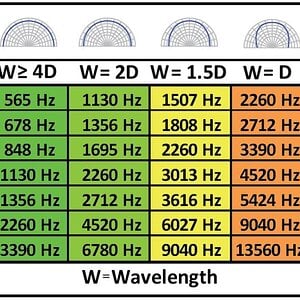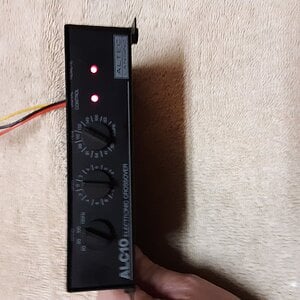Tuning frequency help
- Thread starter loudcaprice5
- Start date
- Replies 44
- Views 5K
You are using an out of date browser. It may not display this or other websites correctly.
You should upgrade or use an alternative browser.
You should upgrade or use an alternative browser.
-
8Participant count
-
Participant list
Thats the difference between built systems. Atm I have a more SQL type system but I usually will run an SPL but looking forward to get back to more of a SQ Type The lows do not bother me as much as the Higher frequencies. High pitched tweets will run me into the fatigue areas on my ears, but the hard and low bass will drain the body sitting in it long enough.I find those ultra low frequencies are rough on the ears. It's like I don't really "hear" anything, I just feel this incredible pressure on my ear drums.
Firewalker
CarAudio.com VIP
My '96 Escort GT used to bother my friends so much because they would complain about what felt like their eyeballs bouncing up and down. One friend swore he felt his heart skip a beat. Idk if that is even possible but idk that system was loud enough it shattered the back hatchback window while I was driving down route 66 shooting loops (what we used to call them as it was 1.5 mile loop from one part of the town from one end to the other). Even a song was written about it,lol. Everyone knew it was about my old town as it has the words "Doing a loop from the Hardees to Lombardi's!".
I've been to about 250 concerts when I lived in the Chicagoland area. At this point I know I have tinnitus that acts up a couple times a week. So at this point I try for a mix of SPL and SQ. Now if the damn heat would calm down I can finally install the new 6.5" mid-bass stevens and the new tweeters before vacation now that I finally have the pods painted to match the interior with custom paint.
I've been to about 250 concerts when I lived in the Chicagoland area. At this point I know I have tinnitus that acts up a couple times a week. So at this point I try for a mix of SPL and SQ. Now if the damn heat would calm down I can finally install the new 6.5" mid-bass stevens and the new tweeters before vacation now that I finally have the pods painted to match the interior with custom paint.
Passive radiators are just physical ports and they are much more dificult to tune correctly. Additionally, you would normally require about double the surface area of the original cone. So, 1 12" woofer, 2 12" radiators, 1 15" woofer, 2 15" radiators, etc. In this case, that would be 4 18" passives radiators or 2 36" passives radiators! I'd say stick with the factory recomended bass reflex port (rectangled curf or round flared), 35Hz or 3db down, 31Hz at the lowest. Running the specs on this driver in bass box pro looked good down to 31Hz using a flared (outside end) port.Big difference, but when you get into the low 30s and 20s you really need to start looking at passive radiators.
Last edited:
Many, even high end car audio tweeters tend to experience nasty resonances, peaks at around 18-20kHz which can definitely result in listener fatigue. I've come to appreciate what a good DSP (Audison Bit One or AudioControl) can do to correct his anomaly. I've even returned to the crisp accuracy of a good metal dome and enjoy no fatigue when I use the DSP to smooth things out.My '96 Escort GT used to bother my friends so much because they would complain about what felt like their eyeballs bouncing up and down. One friend swore he felt his heart skip a beat. Idk if that is even possible but idk that system was loud enough it shattered the back hatchback window while I was driving down route 66 shooting loops (what we used to call them as it was 1.5 mile loop from one part of the town from one end to the other). Even a song was written about it,lol. Everyone knew it was about my old town as it has the words "Doing a loop from the Hardees to Lombardi's!".
I've been to about 250 concerts when I lived in the Chicagoland area. At this point I know I have tinnitus that acts up a couple times a week. So at this point I try for a mix of SPL and SQ. Now if the damn heat would calm down I can finally install the new 6.5" mid-bass stevens and the new tweeters before vacation now that I finally have the pods painted to match the interior with custom paint.
SlugButter
CarAudio.com VIP
Passive radiator setups are easy to tune I think. I did have to buy a digital scale to get weights right though. I’ve done a ton of passive radiator setups. Trying to replicate a ported box with passive radiators is kind of a waste really. It doesn’t save that much space over a flared aeroport. You need to do ported box air space and double the cone area with radiators. I like to run TS parameters on the sub for a sealed box, use that air space with a single radiator the same size as the sub, and tune it really low, around 25 HZ. This is the best way to use radiators, IMO. I think it sounds better than sealed setups even and gives the most advantage for the amount of space used.Passive radiators are just physical ports and they are much more dificult to tune correctly. Additionally, you would normally require about double the surface area of the original cone. So, 1 12" woofer, 2 12" radiators, 1 15" woofer, 2 15" radiators, etc. In this case, that would be 4 18" passives radiators or 2 36" passives radiators! I'd say stick with the factory recomended bass reflex port (rectangled curf or round flared), 35Hz or 3db down, 31Hz at the lowest. Running the specs on this driver in bass box pro looked good down to 31Hz using a flared (outside end) port.
Jimi77 5,000+ posts
CarAudio.com VIP
Passives are very simple to tune, you just add subtract weight (usually in the form of fender washers) until you hit your tuning frequency. Beats the hell out of finding out your real tuning frequency is too high and you have to rebuild your slot ported box. Additionally, PRs can be adjusted to different frequencies depending on your mood. Lastly, there's the space advantage.
The downsides are cost and depending on application you may need 2 (per sub) or run out baffle space. PR's get out phase below tuning almost immediately so the SSF has to be set tighter.
The downsides are cost and depending on application you may need 2 (per sub) or run out baffle space. PR's get out phase below tuning almost immediately so the SSF has to be set tighter.
Jimi77 5,000+ posts
CarAudio.com VIP
You don't need a scale. Play a sine wave of the frequecy you're shooting for and just watch for sub to stop moving.Passive radiator setups are easy to tune I think. I did have to buy a digital scale to get weights right though. I’ve done a ton of passive radiator setups. Trying to replicate a ported box with passive radiators is kind of a waste really. It doesn’t save that much space over a flared aeroport. You need to do ported box air space and double the cone area with radiators. I like to run TS parameters on the sub for a sealed box, use that air space with a single radiator the same size as the sub, and tune it really low, around 25 HZ. This is the best way to use radiators, IMO. I think it sounds better than sealed setups even and gives the most advantage for the amount of space used.
SlugButter
CarAudio.com VIP
Well, I build a few radiator boxes every once in awhile. The scale is way easier for me. It’s a long GD walk from the wood shop to my driveway to put it on an amp also, so there is the laziness element you didn’t account for. Also if you get it wrong, you have to unscrew the radiator to fix it. That’s a killer on those things and they tend to warp.You don't need a scale. Play a sine wave of the frequecy you're shooting for and just watch for sub to stop moving.
Last edited:
Jimi77 5,000+ posts
CarAudio.com VIP
SlugButter
CarAudio.com VIP
You don't need to double cone at
area, you can increase displacement with throw. Check out the Earthquake SLAPS PR's.
Jimi77 5,000+ posts
CarAudio.com VIP
As always nice looking enclosure. What sub/power?
Where are you seeing the excursion specs on the slaps?
You don't need to double cone at
area, you can increase displacement with throw. Check out the Earthquake SLAPS PR's.
SlugButter
CarAudio.com VIP
Dayton audio HE 10. I still have the enclosure but I used the radiators in other projects. An RDS audio 8 inch sub with the radiator was good also. The enclosure would work with some sealed 10s also, since it’s around 1.6 cubes. I think I’m going to put some JL W1s or W3s in it and give it to my brother. It has a grill for the front and he ruins subs more than anyone I’ve ever seen.As always nice looking enclosure. What sub/power?
SlugButter
CarAudio.com VIP
52 mm one way excursion. In a ported box space, the Dayton is pushing them to around 40 mm at port tuning.Where are you seeing the excursion specs on the slaps?
Activity
No one is currently typing a reply...
Similar threads
Dab gummit! I knew I was lacking. Maybe Bose will get me there.
- Started by Evyn1
- Enclosure Design & Construction
- 7
- 835
Yes. Its the only one available on that amp. Correct
- Started by lliamiskool
- Wiring, Electrical & Installation
- 11
- 1K
Alright thanks for the help man
- Started by LandonMaxwell
- Subwoofers
- 6
- 1K
SQ is subjective. If you're looking for the flattest possible response curve, usually sealed will give you that in a car. Porting is more...
- Started by 2023 LTZ
- General Car Audio
- 5
- 1K
Did you say you dropped it off at the autoshop? Well that's the problem. Not all all mechanics are made alike. Even if they are ASE certified...
- Started by maninikine
- Wiring, Electrical & Installation
- 5
- 1K


